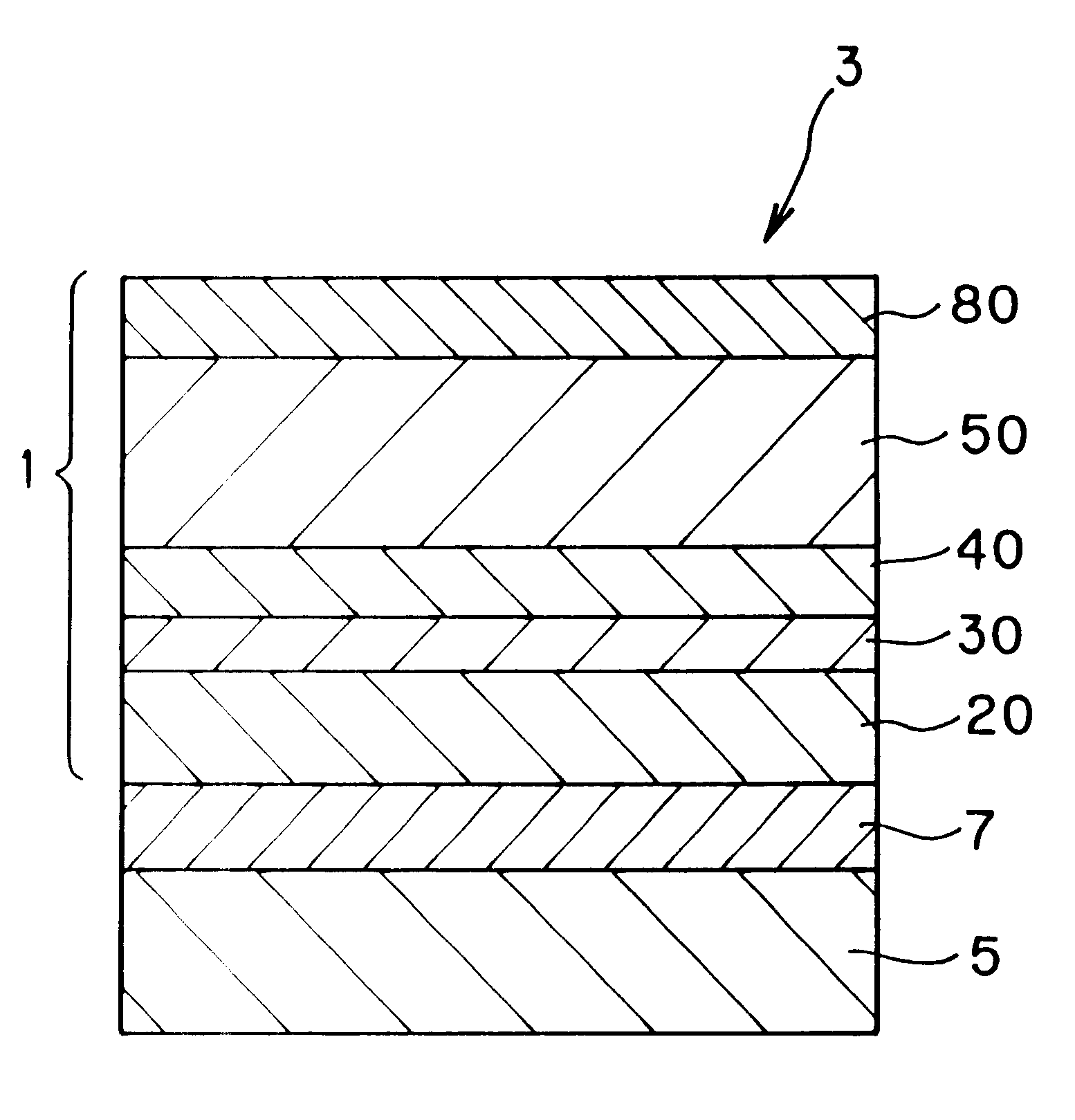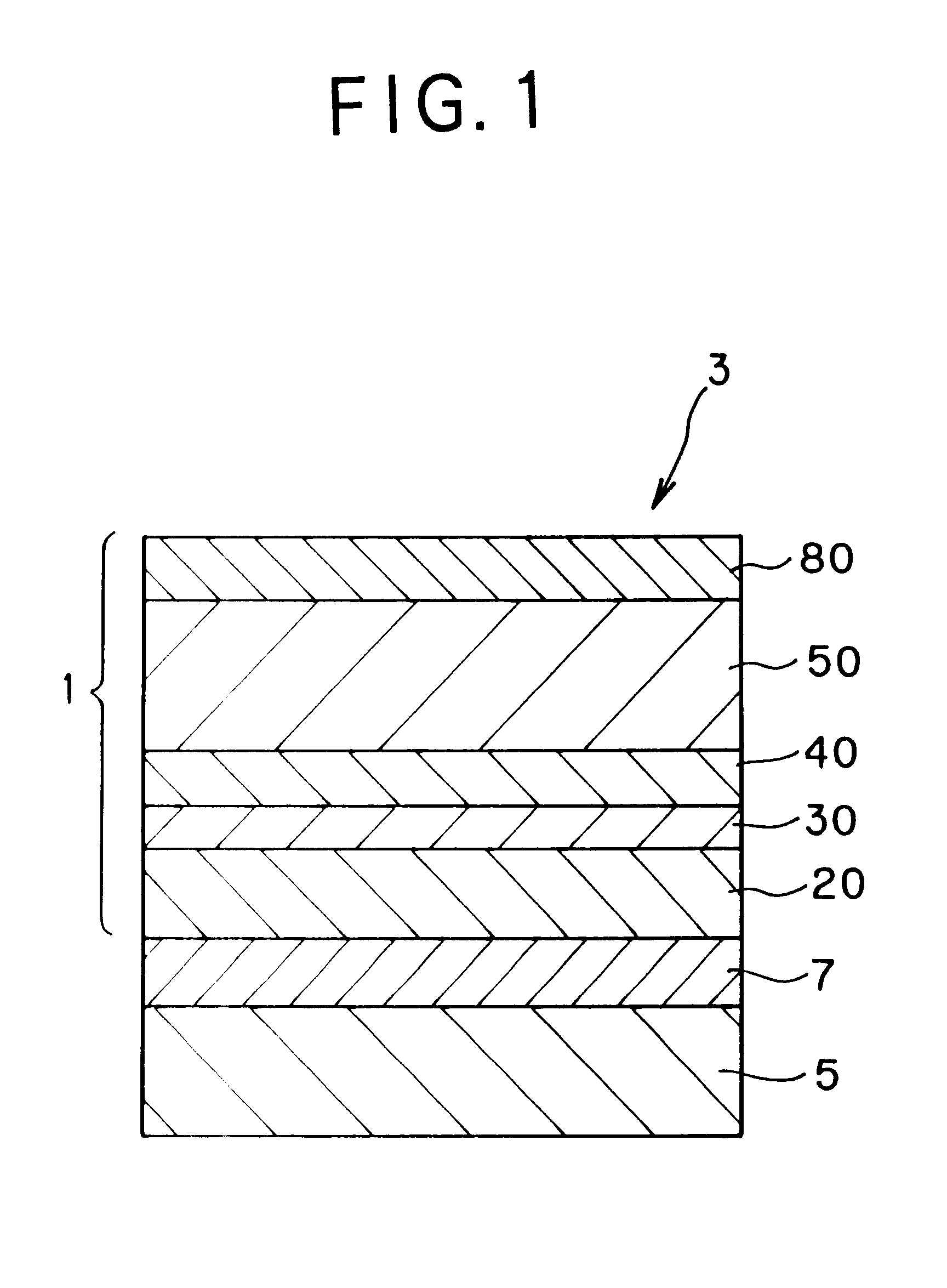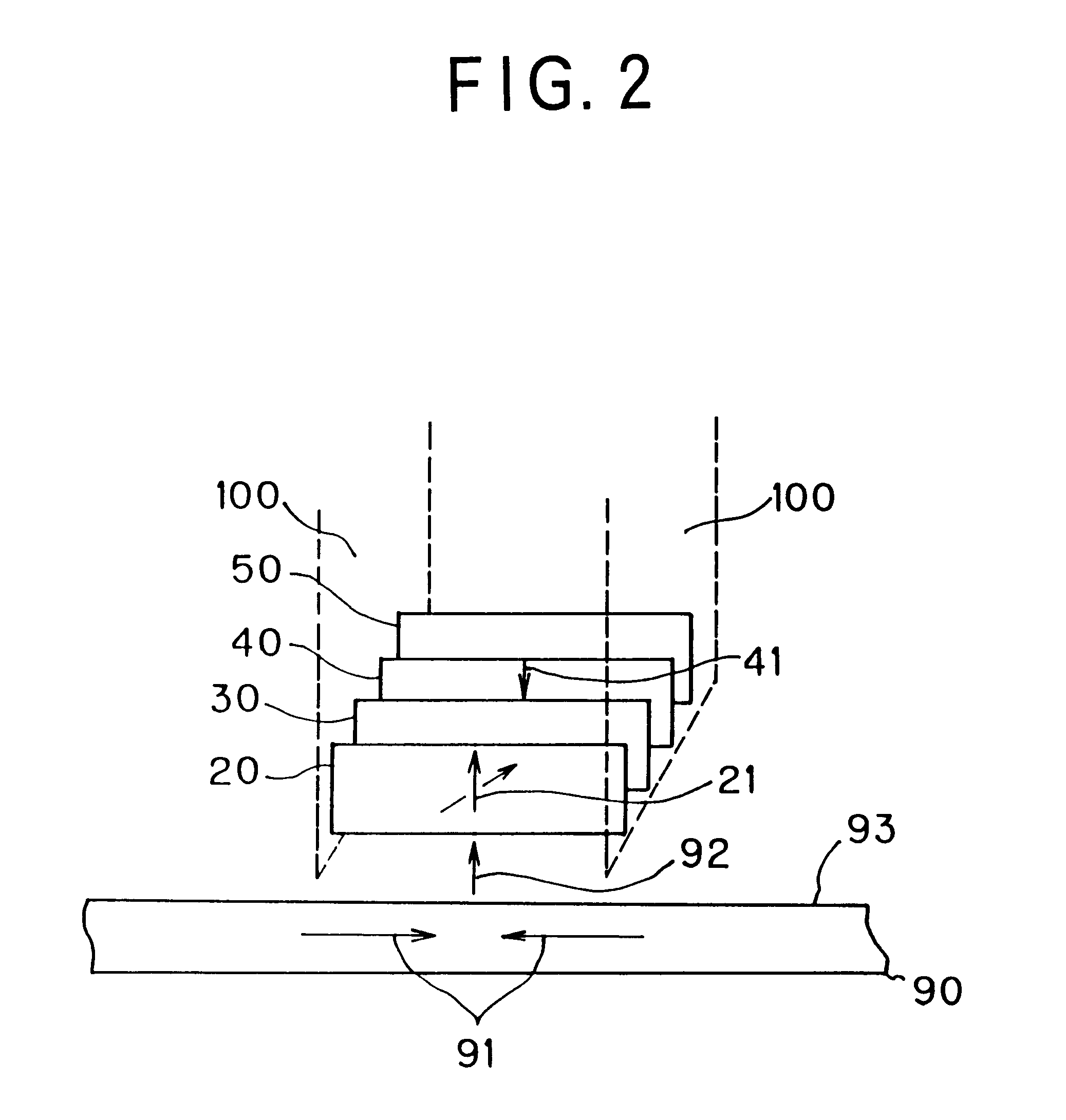Magnetoresistance effect film and magnetoresistance effect type head
a technology of magnetoresistance effect and film, applied in the field of magnetoresistance effect film and magnetoresistance effect type head, can solve the problems of insufficient sensitivity of materials, inapplicability of artificial lattice magnetic multilayer films, and inability to meet the requirements of strict heat run test,
- Summary
- Abstract
- Description
- Claims
- Application Information
AI Technical Summary
Problems solved by technology
Method used
Image
Examples
example ii
[Example II]
From the foregoing experimental results, attention was paid to Rh having the most excellent function as the protective layer. Various samples were prepared as shown in Table 2 below, wherein protective layers were made of Rh while compositions of antiferromagnetic layers were variously changed. The samples were prepared substantially in the same manner as in Example I. Evaluation similar to that in Example I was performed with respect to the prepared samples. The results are shown in Table 2.
From the results shown in Table 2, it is seen that in case of the material of the protective layer being Rh, the excellent results can be obtained in the combination with the antiferromagnetic layers containing Mn no less than 40 at %. Among them, the highly excellent results can be obtained in the combination with the antiferromagnetic layer made of RuRhMn, RuPtMn or RuNiMn which contains Mn and Ru.
example iii
[Example III]
(Preparation of Inventive Sample III-1)
A spin valve (SV) type magnetoresistance effect film being a main part of a spin valve type magnetoresistance effect type head was prepared in the following manner. Specifically, a sample (Inventive Sample III-1) of the spin valve type magnetoresistance effect film was prepared by stacking, on a substrate 5 (AlTiC with Al.sub.2 O.sub.3), an under layer 7 (Ta; 5 nm in thickness), a soft magnetic layer 20 (NiFe; 9 nm in thickness / Co; 1 nm in thickness), a non-magnetic metal layer 30 (Cu; 2.5 nm in thickness), a ferromagnetic layer 40 (Co; 2 nm in thickness), an antiferromagnetic layer 50 (Ru.sub.4 Rh.sub.14 Mn.sub.82 ; 10 nm in thickness) and a protective layer 80 (Rh; 5 nm in thickness) in the order named.
The impurity concentration of the antiferromagnetic layer 50 was such that the oxygen concentration: 200 to 400 ppm, the carbon concentration: 80 to 200 ppm, the sulfur concentration: 80 to 300 ppm and the chlorine concentration: 5...
example iv
[Example IV]
According to the preparation of Inventive Sample I-1, various samples were prepared by variously changing the sputtering condition so as to provide the samples having different concentrations of impurities (oxygen, carbon, sulfur, chlorine) contained in the antiferromagnetic layer. Using the samples, an influence of the impurity concentration of the antiferromagnetic layer upon the exchange coupling energy Jk was examined. The results are shown in graphs of FIGS. 7 to 9. From the results, it is seen that the oxygen concentration needs to be suppressed to 1 to 2,000 ppm, the carbon concentration to 1 to 2,000 ppm, the sulfur concentration to 1 to 1,000 ppm and the chlorine concentration to 1 to 2,000 ppm for obtaining the exchange coupling energy Jk of no less than 0.1 erg / cm.sup.2.
It is confirmed that such impurity concentration suppression can be realized by sputtering a target in a vacuum film forming apparatus degassed to an ultimate pressure of no higher than 2.times...
PUM
| Property | Measurement | Unit |
|---|---|---|
| thickness | aaaaa | aaaaa |
| blocking temperature Tb | aaaaa | aaaaa |
| blocking temperatures Tb | aaaaa | aaaaa |
Abstract
Description
Claims
Application Information
 Login to View More
Login to View More - R&D
- Intellectual Property
- Life Sciences
- Materials
- Tech Scout
- Unparalleled Data Quality
- Higher Quality Content
- 60% Fewer Hallucinations
Browse by: Latest US Patents, China's latest patents, Technical Efficacy Thesaurus, Application Domain, Technology Topic, Popular Technical Reports.
© 2025 PatSnap. All rights reserved.Legal|Privacy policy|Modern Slavery Act Transparency Statement|Sitemap|About US| Contact US: help@patsnap.com



